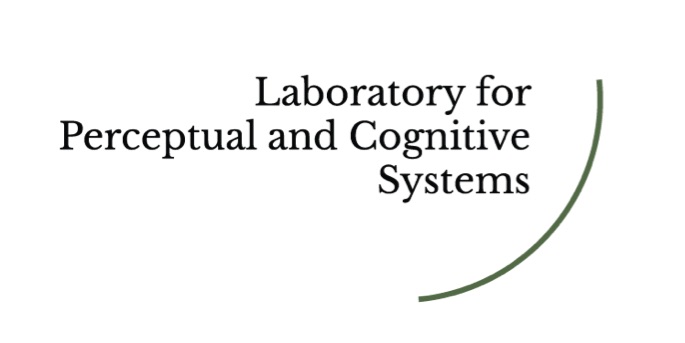‘RSU, with its two strong pillars – healthcare and social sciences – is the right place to conduct interdisciplinary research and studies. The answers to today's challenging and hitherto unanswered questions cannot be found within the framework of one discipline alone. This seminar cycle on the functioning of the psyche, language, and cognitive, consciousness and perception processes and how they interact with other fields is an example for interdisciplinary collaboration that will open up opportunities for new scientific projects, such as diagnosis and treatment of neurodegenerative diseases’, says RSU Vice-Rector for Science, Agrita Kiopa. She emphasises that RSU doctoral students and young researchers will benefit from the opportunity to learn together with colleagues and industry practitioners who have proven their excellence.
Topics
- Spatial perception and spatial cognitive processes, their impact on neural and other processes
- Processing emotions
- Visual perception and its relation to other senses
- Perception of medical images
- Cross-modal perception (sight, smell, taste, touch, hearing and their connections)
- Integrative analysis of neural and cognitive processes
- Mathematical and logical modelling of cognitive processes
The webinar cycle is implemented by RSU in cooperation with the University of Latvia (Laboratory for Perceptual and Cognitive Systems at the Faculty of Computing).
Prof. Pinna: Latvian Researchers Show An Incredible Open-Mindedness
Webinars 2021–2023
The Robert Blumberg 2022 Distinction Lecture in Cognitive Science 'Navigation, the Spatial Domain and STEM'
16/01/23
Guest lecturer: Professor Emily K. Farran
Prof. Emily Farran, University of Surrey, has been working on neurodevelopmental disorders, spatial cognition in typical and atypical populations. Her current research focuses on typically and atypically developing children, individuals with Autism, Down syndrome, Williams syndrome, Attention hyperactivity disorder, and Developmental coordination disorder. Prof. Farran is interested in the areas of navigation, motor performance, mental imagery, spatial language, perceptual integration, visuo-spatial memory, and orientation coding. Her most recent research focuses on the relationship between spatial thinking and Science Technology Engineering and Maths (STEM) in primary school age children.
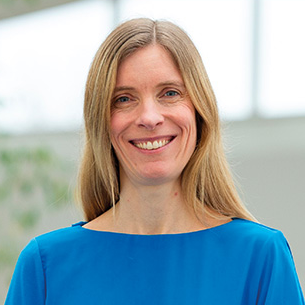
Illusions of mind
from perception to biology, from normality to pathology
16/06/22
Guest lecturer: Professor Baingio Pinna
Prof. Pinna is one of today's most significant specialists in the field of visual perception. In addition to PhD in psychology, Prof. Pinna has also obtained master’s degree in computer engineering. Pinna’s works are published in internationally recognised scientific journals. The professor has become known to the general public for discovering the so-called watercolours illusion.

- Contents, presentation + video recording
In modern vision science, illusions are related to a “mismatch/disagreement” between two domains: geometrical/physical vs. phenomenal. In this work we explore and extend the notion of illusion from perception to biology and from normality to pathology.
By exploring several compelling new phenomena, main purpose of this work is to answer the following questions:
- What is physical and what is phenomenal in the analysis of illusions?
- Is there a dividing line (and if so, how can we describe it) between illusions and non-illusions?
- Is it true that illusions are rare phenomena?
- Why do illusions exist?
- What is their perceptual and evolutionary role?
- What is their role in defining expressiveness, social relations, and personality assessments?
- What is their role in defining normality and pathology?
These questions and the related issues are discussed by deepening and exploring the biological, psychological, and social implications of both illusions and illusoriness. We suggest that illusions are not rare and niche phenomena; in contrary , illusions can be considered as a central biological requirement of natural selection and Darwinian fitness for all living organisms. Within the domain of human perception, by introducing what we called “Lombroso’s illusion”, we demonstrate the basic role of illusions of good and evil in assigning expressiveness and personality traits, in defining emotions, attitudes, normality, pathology, and many other properties necessary for all complex human relationships.
Cognitive Heuristics for Commonsense Reasoning in the next generation of AI systems
25/05/22
Guest lecturer: Antonio Lieto, PhD
Antonio Lieto is a researcher (assistant professor) in Computer Science at the Department of Computer Science of the University of Turin (Italy) and a Research Associate at the ICAR-CNR Institute in Palermo (Cognitive Systems for Robotics Lab). His research interests include computational models of cognition, commonsense reasoning, language and knowledge technologies. He is the current Vice-President of the Italian Association of Cognitive Sciences (AISC, 2017-2022), the recipient of the “Outstanding BICA Research Award” from the Biologically Inspired Cognitive Architecture Society (USA), and is an ACM Distinguished Speaker on the topics of cognitively inspired AI. He has authored the book “Cognitive Design for Artificial Minds” (Routledge/Taylor & Francis, 2021).
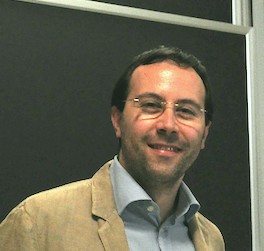
Homepage
ACM Distinguished Speaker
Vice-President of the Italian Association of Cognitive Science
Deputy Editor in Chief of JETAI (Journal of Exp. & Theor. Artif. Intell., T&F)
Associate Editor of Cognitive Systems Research (Elsevier)
Author of "Cognitive Design for Artificial Minds" (2021), Routledge, Taylor & Francis
- About the webinar + presentation
Commonsense reasoning is one of the main open problems in the field of Artificial Intelligence (AI) while, on the other hand, seems to be a very intuitive and default reasoning mode in humans and other animals.
In this talk, I will present two cognitively inspired AI applications – Dual PECCS and the TCL reasoning framework – showing how a cognitively-inspired approach to the design and realization of intelligent systems allows to:
- address some crucial aspects of commonsense reasoning in AI research (namely: dealing with typicality effects and with the problem of commonsense compositionality),
- integrate such systems with more general cognitive architectures,
- to their simulations as “computational explanations” to better understand the heuristics used by the human mind to face complex problems.
Wearables, theatre, and the cognitive sciences
7/04/22
Guest lecturer: Dr. Jamie A. Ward, Goldsmiths College, University of London
Dr Jamie A Ward Jamie is a lecturer at the Department of Computing, Goldsmiths, University of London. He received his Ph.D. in electronics from ETH Zurich, where he developed some of the first uses of multi-modal, wearable sensing for human activity recognition. He continued this work as a Marie Curie Research Fellow in Computing at Lancaster University, and later as a postdoc at DFKI Germany, and the UCL Institute for Cognitive Neuroscience. In between these posts he retrained and worked as an actor. His work centers around the convergence of technology, neuroscience, theatre, and autism.
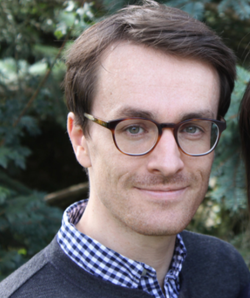
- About the webinar, promo video + video recording
In this talk, I will explore how three very different topics - wearable technology, theatre, and the cognitive sciences - can be brought together in exciting new ways. This rich and highly inter-disciplinary combination has potential impact on a range of diverse areas including theatrical performance and autism research.
Brain pathways & information flow for face processing
24/03/22
Guest lecturer: Prof. Aina Pūce, Ph.D.
Aina Pūce, Ph.D., is Eleanor Cox Riggs Professor of Psychological & Brain Sciences in Neuroscience & Cognitive Science programs at Indiana University, Bloomington, USA. She is also an affiliate at Indiana University Network Institute.
Prof. Pūce is among the most prominent contemporary neuroscientists. A current research focus of prof. Pūce is on brain basis of non-verbal communication – the study how consciously or unconsciously perceived face and body motion influences decisions about the intentions, goals and mental states of others. Her research integrates the use of high-density electroencephalography (EEG) and magnetoencephalography (MEG), functional and structural magnetic resonance imaging (MRI), white matter tractography and infrared eye tracking. Prof. Pūce’s research group also investigates structural/functional connectivity patterns in the brain as subjects evaluate the social behaviors of others.
- Twitter: @aina_puce
- Wordpress: neurowanderer.blog
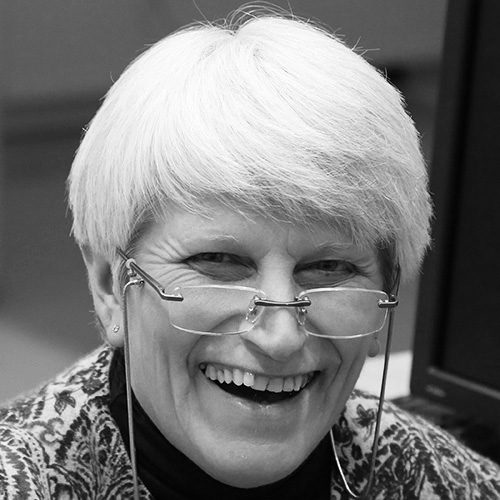
- Publications
Prof. Pūce is author or co-author of numerous groundbreaking studies in neuroscience. She is also co-author of a textbook in neuroscience:
- Riitta Hari & Aina Puce (2017) MEG-EEG Primer, New York, Oxford University Press
Prior to her research at Indiana University, Bloomington, prof. Pūce worked at several prominent research institutes – the University of Melbourne (Australia), Yale University (USA), and Virginia University (USA), to mention just a few. She is still adjunct professor at Brain Sciences Institute, Swinburne University, Melbourne and Honorary Principal Research Fellow, National Stroke Research Institute, Melbourne, Australia.
Prof. Pūce is Chair-Past at the Organization for Human Brain Mapping (OHBM). She has been a Co-Chair, Committee of Visitors, NSF Behavioral & Cognitive Sciences Division, Associate Editor, Perspectives on Psychological Science, and a Member of the Editorial Board of Scientific Reports.
Prof. Pūce has numerous honors and grants and is among the most distinguished neuroscientists contributed to the functional neuroanatomy of face processing. Prof. Pūce’s group was to first to identify the existence of potentially multiple pathways for processing faces in the brain – with activity being demonstrated both in a ventral temporal and a lateral temporal pathway, as best shown by the several publications publications. One of those was the first ever fMRI study of face processing (Puce et al., 1995), another synthesized neurophysiological investigations to two dozen face processing tasks from a series of 100 epilepsy surgery patients (Puce et al., 1999).
- Puce A, Allison T, Gore JC, McCarthy G. (1995) Face-sensitive regions in human extrastriate cortex studied by functional MRI. J Neurophysiol 74:1192-1199. PMID: 7500143
- Puce A, Allison T, McCarthy G. (1999) Electrophysiological studies of human face perception. III: Effects of top-down processing on face-specific potentials. Cereb Cortex 9:445-458. PMID: 10450890
Prof. Pūce also contributed to the work on human brain’s response to viewing the actions of others. Among other groundbreaking findings, prof. Pūce’s group also demonstrated that event-related potentials could selectively modulated as a function the type of active body part (Wheaton et al., 2001).
- Wheaton KJ, Pipingas A, Silberstein RB, Puce A. (2001) Human neural responses elicited to observing the actions of others. Vis Neurosci 18:401-406. PMID: 11497416
Additionally Prof. Pūces work indicates that different neural mechanisms might be responsible for processing eye and mouth expressions in the human brain. Movements of the mouth are likely to be treated as biological motion – because they involve an articulated joint (mandible), whereas movements of the eyes are likely processed by mechanisms responsive to local luminance contrast changes (Rossi et al., 2014, 2015).
- Rossi A, Parada FJ, Kolchinsky A, Puce A. (2014) Neural correlates of apparent motion perception of impoverished facial stimuli: A comparison of ERP and ERSP activity. Neuroimage 2014 Apr 13. pii: S1053-8119(14)00284-5. doi: 10.1016/j.neuroimage.2014.04.029. PMID: 24736174
- Rossi A, Parada FJ, Latinus M, Puce A. (2015) Photographic but not line-drawn faces show early perceptual neural sensitivity to eye gaze direction. Front Hum Neurosci. 2015 Apr 10;9:185. doi: 10.3389/fnhum.2015.00185. eCollection 2015. PMID: 25914636
Further significant contributions by prof. Pūce are in the field of social cognition disorders e.g. Autism, and Autism spectrum disorders, clinical research on epilepsy surgery patients, statistical analysis of MEG sensor-level data.
Since 2016 prof. Pūce has co-chaired (with Cyril Pernet) a Committee for the Organization for Human Brain Mapping [OHBM] for producing best practice guidelines for the collection, analysis and publication of MEEG data. [See Pernet P, Garrido M, Gramfort A, Maurits N, Michel C, Pang E, Salmelin R, Schoffelen JM, Valdes-Sosa PA, Puce A. (2018) Best practices in data analysis and sharing in neuroimaging using MEEG. Preprint: https://osf.io/a8dhx [created 09 AUG 2018] and Pernet P, Garrido M, Gramfort A, Maurits N, Michel C, Pang E, Salmelin R, Schoffelen JM, Valdes-Sosa PA, Puce A. (2020) Issues and recommendations from the OHBM COBIDAS MEEG committee for reproducible EEG & MEG research. Nature Neurosci 23:1473-83. doi: https://10.1038/s41593-020-00709-0
- About the webinar + video recording
While the components of the human face processing pathway are known, there is still debate about how these various brain regions are connected. I will describe a recent study where we attempted to investigate a putative route for information flow between the fusiform gyrus and the superior temporal sulcus [STS]. These 2 regions are critical for processing different aspects of faces, but it is known that there is no direct white matter pathway between the two. We analyzed intracranial field potential data in epilepsy surgery patients to a complex face task and identified active sites to face stimuli in 4 regions of interest in the ventral occipitotemporal pathway within a standardized 3D anatomical space. We then identified endpoints of known white matter pathways in over 1000 healthy subjects [Human Connectome Project] expressed in the same 3D space. An overlap analysis between active face sites and white matter pathway endpoints was performed to look for a putative route of information flow between fusiform gyrus and STS. We make the claim that information travels between the two via an indirect connection through the inferior temporal cortex.'
Sex/gender differences in language and brain: Findings and methodological challenges
Sex/gender is a highly studied and debated issue in research and politics. Here I present the evidence for behavioural and neurologic sex/gender differences related to language and discuss the methodological challenges that such investigations face. These challenges are applicable to many fields beyond the realm of sex/gender.
24/02/22
Guest lecturer: Prof. Mikkel Wallentin
Prof. Mikkel Wallentin is a professor of cognitive science at Aarhus University, Department of Clinical Medicine - Center of Functionally Integrative Neuroscience, and the School of Communication and Culture.
Prof. Valentin is among the most innovative and significant neuroscientists in Denmark contributing to the fields of medical neuroscience as well as to psycholinguistics, semiotics, music, theatre, and other areas cross-linking neuroscience, behavioural sciences, and humanities.
His publications include:
- Wallentin, M. (2009). "Putative sex differences in verbal abilities and language cortex: A critical review." Brain and language, 108(3), 175-183.
- Witek, M. A., Clarke, E. F., Wallentin, M., Kringelbach, M. L., & Vuust, P. (2014). "Syncopation, body-movement and pleasure in groove music." PloS one, 9(4), e94446.
- Wallentin, M., Nielsen, A. H., Friis-Olivarius, M., Vuust, C., & Vuust, P. (2010). "The Musical Ear Test, a new reliable test for measuring musical competence." Learning and Individual Differences, 20(3), 188-196.
- Rocca, R., Coventry, K. R., Tylén, K., Staib, M., Lund, T. E., & Wallentin, M. (2020). "Language beyond the language system: dorsal visuospatial pathways support processing of demonstratives and spatial language during naturalistic fast fMRI." NeuroImage, 216, 116128.
- Gravholt, C. H., Chang, S., Wallentin, M., Fedder, J., Moore, P., & Skakkebæk, A. (2018). "Klinefelter syndrome: integrating genetics, neuropsychology, and endocrinology." Endocrine Reviews, 39(4), 389-423

- About the webinar + video recording
Patterns of free exploration in space shape memory for new environments
20/1/22
Guest lecturer: Dr Iva Brunec, Temple University & University of Pennsylvania, USA
Dr. Iva Brunec is a postdoctoral researcher investigating how people learn the structure of the world around them. Dr. Brunec received her PhD from the University of Toronto. Prior to that, she completed a BSc in Psychology at University College London, UK.
Dr. Brunec is interested in how humans navigate the world across different temporal and spatial scales and how this ability differs across people.
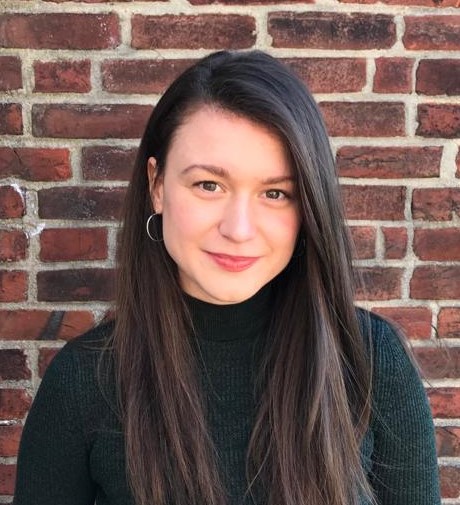
Dr. Brunec is currently a member both at Prof. Nora Newcombe’s Lab at Temple University and Prof. Russell Epstein’s Lab at the University of Pennsylvania, USA.
Recent publications
- Peer, M., Brunec, I. K., Newcombe, N. S., & Epstein, R. A. (2020). Structuring Knowledge with Cognitive Maps and Cognitive Graphs. Trends in Cognitive Sciences
- Brunec, I. K., Robin, J., Olsen, R. K., Moscovitch, M., & Barense, M. D. (2020). Integration and differentiation of hippocampal memory traces. Neuroscience & Biobehavioral Reviews
- Brunec, I. K., Ozubko, J. D., Ander, T., Guo, R., Moscovitch, M., & Barense, M. D. (2020). Turns during navigation act as boundaries that enhance spatial memory and expand time estimation. Neuropsychologia, 107437
- Brunec, I. K., Robin, J., Patai, E. Z., Ozubko, J. D., Javadi, A. H., Barense, M. D., Spiers, H. J., & Moscovitch, M. (2019). Cognitive mapping style relates to posterior-anterior hippocampal volume ratio. Hippocampus, 29(8), 748-754
- Brunec, I. K., Bellana, B., Ozubko, J. D., Man, V., Robin, J., Liu, Z. X., Grady, C., Rosenbaum, R. S., Winocur, G., Barense, M. D., & Moscovitch, M. (2018). Multiple scales of representation along the hippocampal anteroposterior axis in humans. Current Biology, 28(13), 2129-2135.e6
- About the webinar + video recording
When we navigate in a new city, we construct a map of our surroundings from sensory information. However, we know little about how moment-to-moment behavioral patterns during exploration of new environments structure cognitive maps. In the present experiments, we investigated whether differences in free exploration patterns predicted cognitive map quality. We analyzed participants’ moment-to-moment exploration dynamics while they freely navigated in a virtual reality environment. They were then asked to point between buildings in the environment and to draw or build an overhead map. We found that participants who explored more in highly interconnected areas within the environment had better spatial memory. We also found that better spatial memory was predicted by displacement speed, but not by the overall coverage of the environment. These results suggest that exploration dynamics provide a window into mechanisms underlying successful memory formation.
Individual differences in navigation ability: Brain and behaviour
9/12/21
Guest lecturer: Dr. Elizabeth Chrastil (USA)
Assistant Professor
University of California, Irvine
Department of Neurobiology & Behavior
Center for the Neurobiology of Learning & Memory
USA
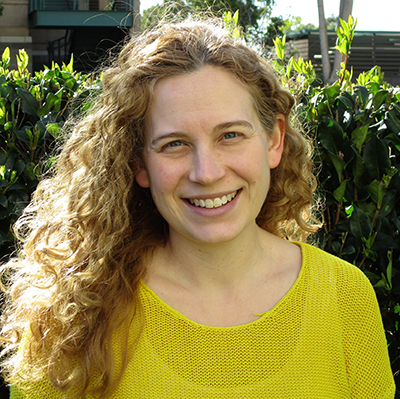
Dr. Elizabeth Chrastil is an Assistant Professor in the Department of Neurobiology & Behavior at UC Irvine and is a fellow of the Center for the Neurobiology of Learning & Memory. Dr. Chrastil received her PhD from Brown University and did her postdoctoral work at Boston University. She also received an MS in biology from Tufts University and a BA from Washington University in St. Louis.
Dr. Chrastil and Alina Tu are Christian Freksa Award-2021 winners for the best presentation ‘The relationship between hippocampal subfield volumes and navigation ability’ at the Spatial Cognition 2020/1 conference.
- About the webinar + video recording
Navigation is a central part of daily life. For some, getting around is easy, while others struggle, and certain clinical populations display wandering behaviors and extensive disorientation. Working at the interface between immersive virtual reality and neuroimaging techniques, my research uses these complementary approaches to inform questions about how we acquire and use spatial knowledge. In this talk, I will discuss both some of my recent work and upcoming experiments that center on three main themes: 1) how we learn new environments, 2) how individuals differ in their spatial abilities (including differences across ages and sexes), and 3) the underlying neural correlates of those differences. More broadly, I will discuss how navigation lends insight into processes of human learning and memory as we try to understand what makes each person unique and how the best navigators learn about their world.
A new approach to object and face perception
11/11/21
Guest lecturer: Professor Baingio Pinna
Prof. Pinna is one of today's most significant specialists in the field of visual perception. In addition to PhD in psychology, Prof. Pinna has also obtained master’s degree in computer engineering. Pinna’s works are published in internationally recognised scientific journals. The professor has become known to the general public for discovering the so-called watercolours illusion.

- About the webinar + video recording
In the webinar, Prof. Pinna will demonstrate a new approach and new methods in the perception of objects and faces. The examples discussed will highlight the importance of iconic representation in object recognition. According to the experimental results and the theory developed by the author, the iconic representation of the object allows to recognise objects without calculating their meaning from all the possible variants, yet reducing it to the few basic features and their relations.
The holistic and decompositional perception of body and faces will be discussed in detail and related to the basic type of the object, which allows to recognise these objects in all their diversity. These studies also confirm that the so-called canonical perspective in the visual perception is less important than the overall iconic perception of the object.
The perception of faces, bodies and objects plays an important role in medicine (both in research of neural and mental processes), in radiology research, perceptual psychology, as well as in such fields as art and design.
